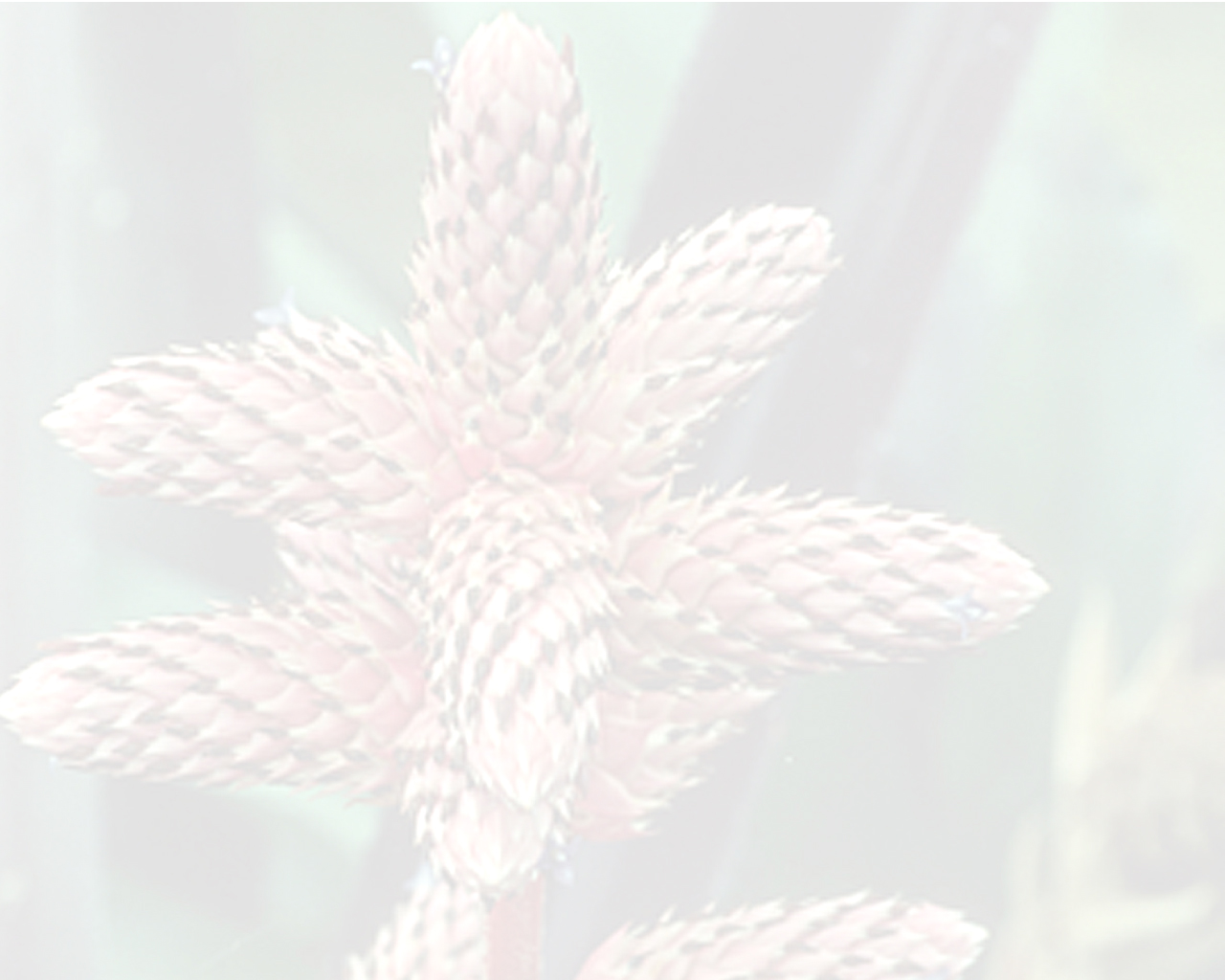



; 0 ; rosette-forming herb to 1 m in flower; leaf-sheath long, 14–22 cm long- x 10–12 cm wide. leaves: blade c; 60 cm long x 2.5–3.5 cm wide, expanding suddenly above sheath to as much as 9 cm wide, strap-shaped, subacute and spinose at apex, grey to greyish brown, indumentum inconspicuous on both surfaces, margins ca densely armed with conspicuous, dark brown, ca curved spines, 1–5 mm longc peduncle and inflorescence together up to c; 1 m long. inflorescence: peduncle with ca imbricate, lanceolate-elliptic cauline leaves, upper ones up to 12 cm long and orange-red to rose-coloured, lower ones shorter; upper internodes red, uppermost ones densely white-lanate; fertile part 15–23 cm long, pinnately to once-branchedly branched (i.e, when lowermost partial inflorescence branched); lowermost primary bracts 4- 7 cm long, lanceolate, orange-red to rose; internodes densely white-lanate; floral bracts ca equalling sepals, spine-tipped. flowers densely arranged in shortly oblong to ovoid or subglobose spikes; sepals free, asymmetric, green; petals purple with two short lobes on either side of adnhate filament. stamens filaments alternately free or epipetalous. pistil: ovary completely inferior. fruits baccate; seeds elongate, thickened at one end, smooth, without appendages or fibres.Edited from (15-08-2014): Mayo et al. 1995. Bromeliaceae in Flora of the Pico Das Almas, Chapada Diamantina - Bahia, Brazil.